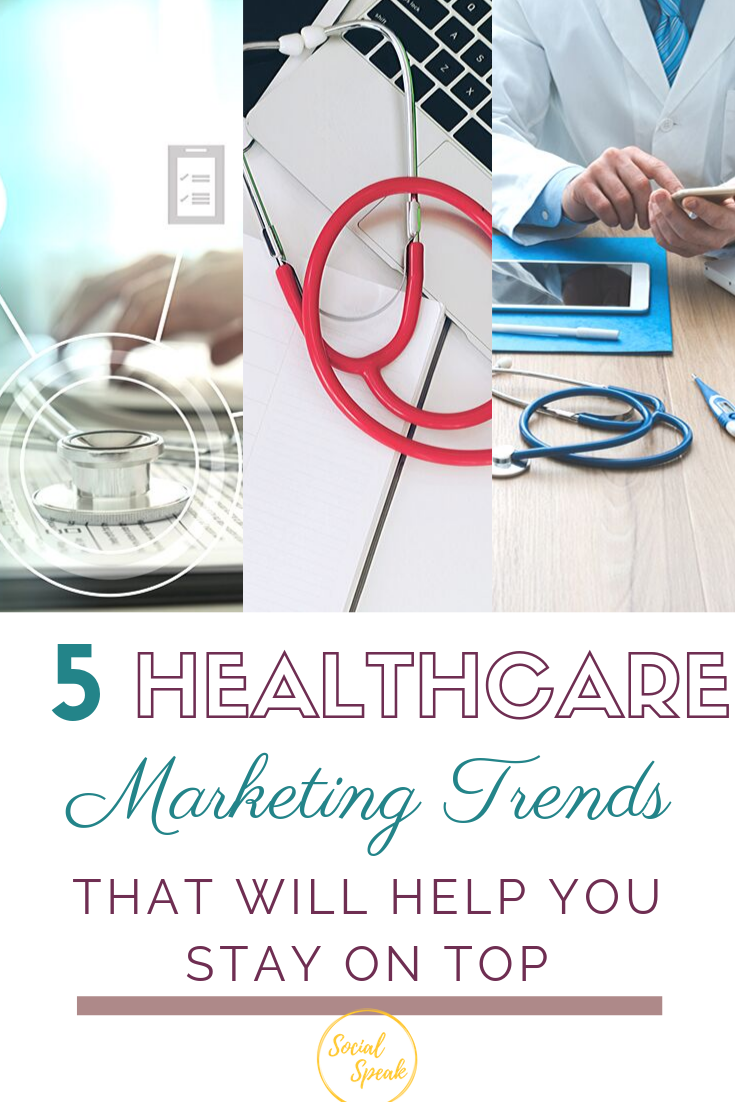Change is the only permanent thing in life, they say. That’s never been truer in the world of healthcare marketing.
Healthcare marketing is continuously changing. Keeping up to date with the latest digital trends and consumer preference is key to remain competitive and acquire a steady stream of patients.
Keep these trends in mind when planning your healthcare marketing campaign.
Excellent digital experience
Most hospital websites focus on providing information such as the address, business hours, doctor’s bios, specialties offered, etc. As competition in the digital landscape heats up, more and more hospitals and healthcare providers are putting a greater focus on patient experience.
83% of patients visit a hospital’s website before booking an appointment. That means a patient’s experience begins with your website. Their online experience will determine whether or not they will convert from leads to actual patients.
For a better online experience, make sure that your website loads quickly and is easy to navigate. Patients love the idea of convenient scheduling. If you offer online booking or have a customer service chatbot they can communicate with, that would be a plus.
You are bound to see a high ROI if you focus on creating an exemplary online experience for potential patients.
Video Marketing
According to a study that was conducted by Hubspot, 45% of people watch more than one hour of video a day. Out of the 45%, an astounding 81% have been convinced to buy a product or avail a service after watching a branded video.
Incorporating video content into your marketing strategy can help build trust and provide a much deeper understanding of what your healthcare company has to offer. Prospective patients are now researching doctors who specialize in the procedure they’re looking for before scheduling an appointment. This is where video content proves useful.
Through videos, you can verbally and visually explain how the procedure work. This can help ease fears or uncertainty. Plus, it helps prospective patients get to know the doctor before a consultation, so they gain a sense of trust beforehand.
If you haven’t already, we urge you to start creating video content, both for your website and social media accounts, sooner rather than later.
Search engine optimization
They say the best place to hide a dead body is on the second page of Google. Why? It’s because 55% of users won’t go past the first three organic results.
According to studies, 89% of consumers turn to the internet when they’re looking for answers for their healthcare queries. You want your website to show up at the top of Google’s search results. Otherwise, you’ll be losing to your competitors.
With more and more people turning to the internet for medical advice, it is important to capitalize on these searches by making your website as visible as possible. To get on page 1 of the search engine results, you’ll need a strong website and an even stronger SEO strategy.
Online reputation management
Your online reputation will have a significant impact on your practice. Why? It’s because a huge majority of patients turn to the internet to research physicians.
The survey revealed that 84% of patients read online reviews to help them gain insight into healthcare providers. 86% of them will be hesitant to schedule a consultation with you if they read a negative review or comment.
To stay competitive, you need to make a concerted effort to manage your reputation, both online and offline.
Whether you like it or not, patients are going to leave reviews. The sad truth is that dissatisfied customers are more likely to leave feedback than happy customers. With a single review, comment or article, the reputation of any healthcare organization can be tarnished.
You can’t make negative feedback go away, but you can encourage happy patients to speak out for your brand. It is in your best interest to encourage patients to leave reviews.
Mobile healthcare apps
Gloomy faces of ailing patients waiting outside the doctor’s office, long queues, and a dull, monotonous hall – this is the picture one would imagine while waiting at a doctor’s clinic or a hospital about a decade ago.
Millennials are the largest U.S. generation, and they demand convenience. They are switching to providers that offer a much higher level of convenience. This is where mobile healthcare apps come in.
In today’s era of the smartphone, keeping in contact with a healthcare provider has never been easier. Patients can chat with their doctors and ask for advice about a symptom or a condition. They can also book appointments with their doctors, access doctor’s prescriptions, and even purchase medicines through their mobile devices. In addition, patients can easily monitor their health conditions themselves through apps. This helps them stay one step ahead of the disease; hence, reducing the need for invasive treatments.
Healthcare apps are also beneficial for doctors and medical staffs. They can check the patient’s reports and prescribe medicines if required. Doctors can even make referrals through the apps.




